The Tower of Pisa
The treatment of the Leaning Tower of Pisa
There is surely no need to describe this monument and its piazza, long part of the collective imagination and one of the chief symbols of Italy. The initial project planning for the treatment of the stone surfaces and the successive intervention were one part of the complex work of the International Committee for the Safeguard and Stabilisation of the Leaning Tower of Pisa, set up in 1990 to solve the problem of the ever increasing lean of the Tower.
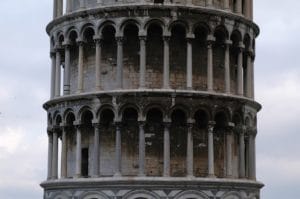
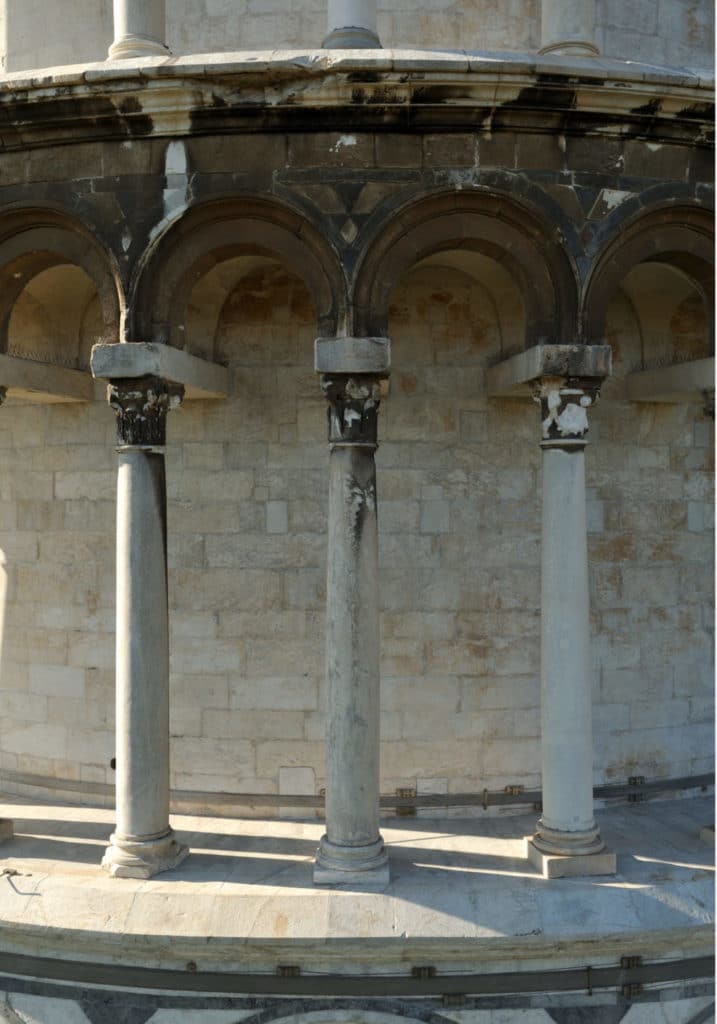


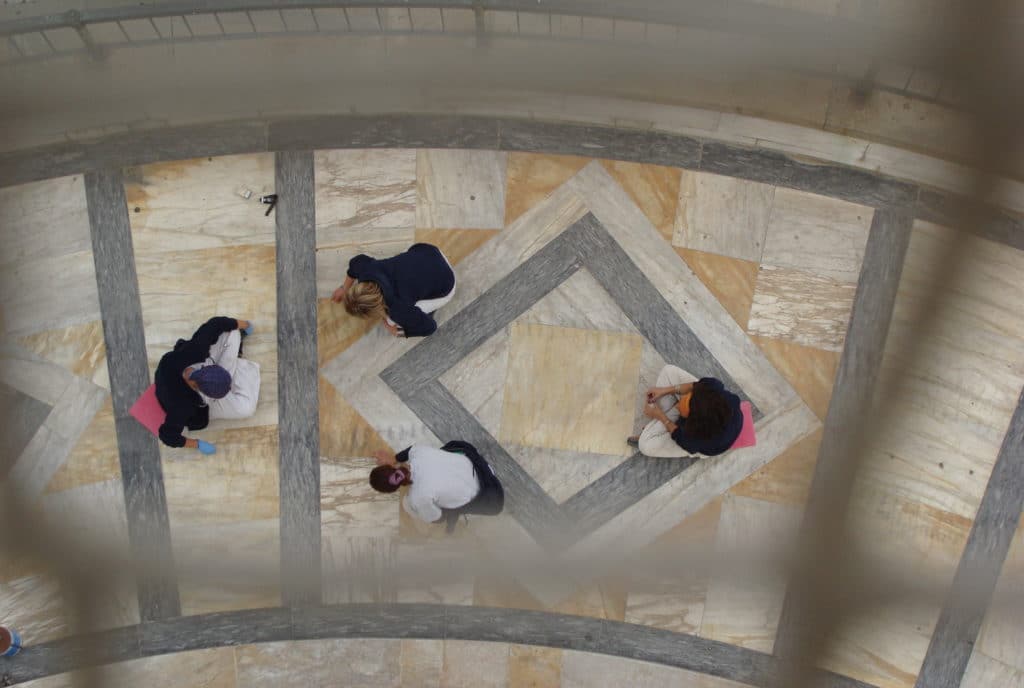
Documentation
To manage the wealth of data collected from research, condition documentation, materials studies, treatment documentation and scientific analyses a complex GIS based system known as AKIRA GIS Server was setup. Apart from the conservators of CBC, the ten years of this ambitious project saw the involvement of the Istituto Centrali di Restauro, with contributions from the Italian National Research Council (Padua) for climate and microclimate studies, Giorgio Torraca, ISMES (Istituto Sperimentale Modelli e Strutture), Scientific Laboratories of the Vatican Museums and the University of Perugia for testing materials, and the Geology Faculties of the Universities of Pavia and Pisa for stone identification, and the Research Centre for IT in Cultural Heritage of the Scuola Normale di Pisa and the Gruppo Liberologico for data processing and managing the IT system.
For the documentation, our input focussed on the establishment of the standards for the graphical representation of the entire surface of the monument and the definition of the necessary and sufficient lexis to cover the accurate mapping of the monument. This obviously went hand in hand with the collection and recording of this data in the worksite and the implementation of the system. It is worth noting that this was the first time we carryied out graphical mapping directly on a computer in a worksite. Using this method we recorded the characteristics of and the treatments carried out on the entire interior and exterior surfaces of the Tower, some 8,000 square metres in total, transferring them onto more than 1000 base maps. This mass of data was then processed to develop summaries of the extent and location of damage and the various materials used in the structure.
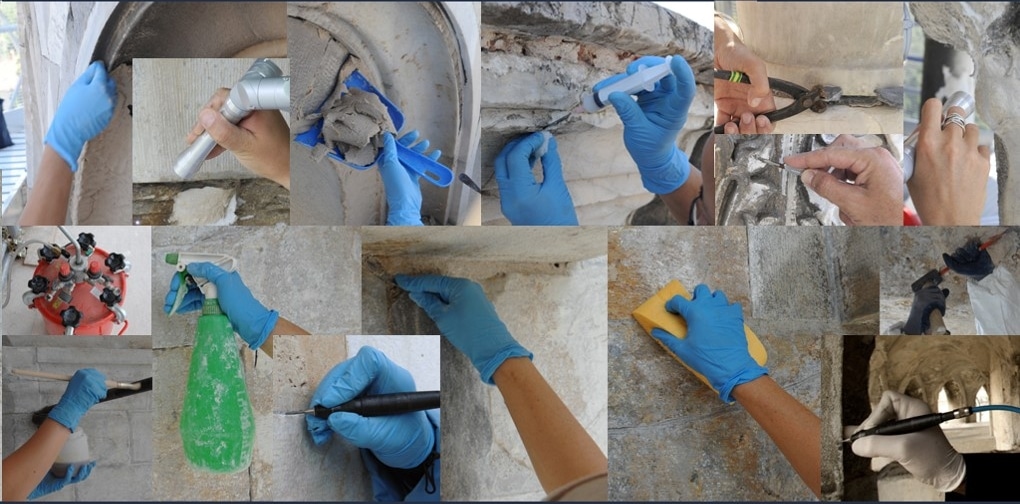
The lengthy treatment lasted a good 8 years and was carried out in close collaboration with the conservators of the Opera della Primaziale Pisana – for centuries responsible for the upkeep of the structures – who themselves treated a third of the surfaces. An important part of the project was setting up the worksite, from the scaffolding – using a specially designed modular structure – to the equipment, operating at a height of up to 60m via a service centre, with compressors, water pumps and electricity all housed at ground level. After tests carried out during project planning and site work, 11 different cleaning systems were developed, from atomised water mists to laser cleaning, 5 different
consolidants and adhesives were used, as well as 1 surface protective. 18 types of mortar were prepared for fills, differing by colour and aggregate grain size, to match the different stones used on the Tower. Various methods were developed to conserve metal parts, remove chewing gum, wax and graffiti. New methods were trialled to consolidate 14 capitals in the lower loggia by immersion, using water and alcohol dispersed silica nanoparticles applied via tailor-made containment bags. An average of 8 CBC conservators worked at all times for a total of 46,493 hours, with 5,579 hours devoted to organization and documentation, while they treated 4,043 square metres.
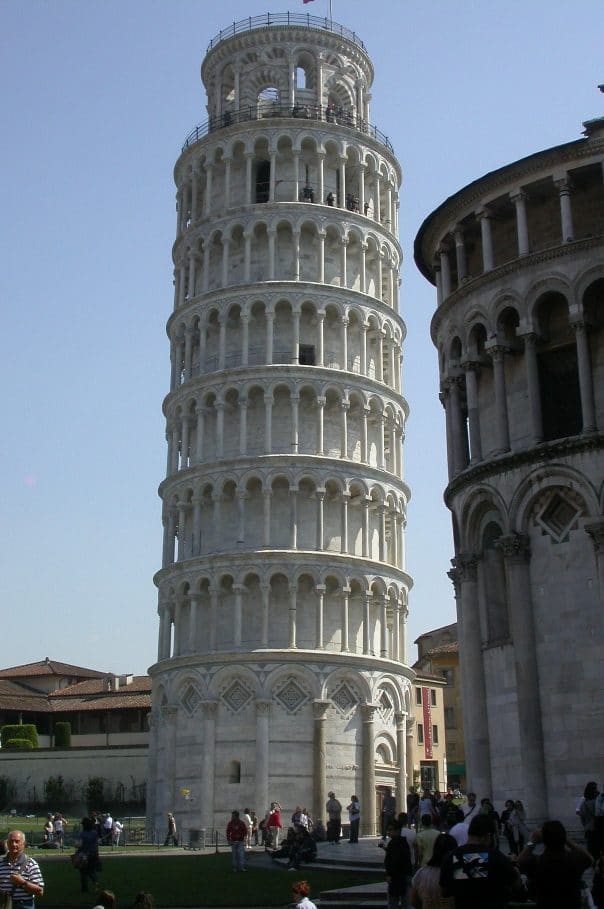

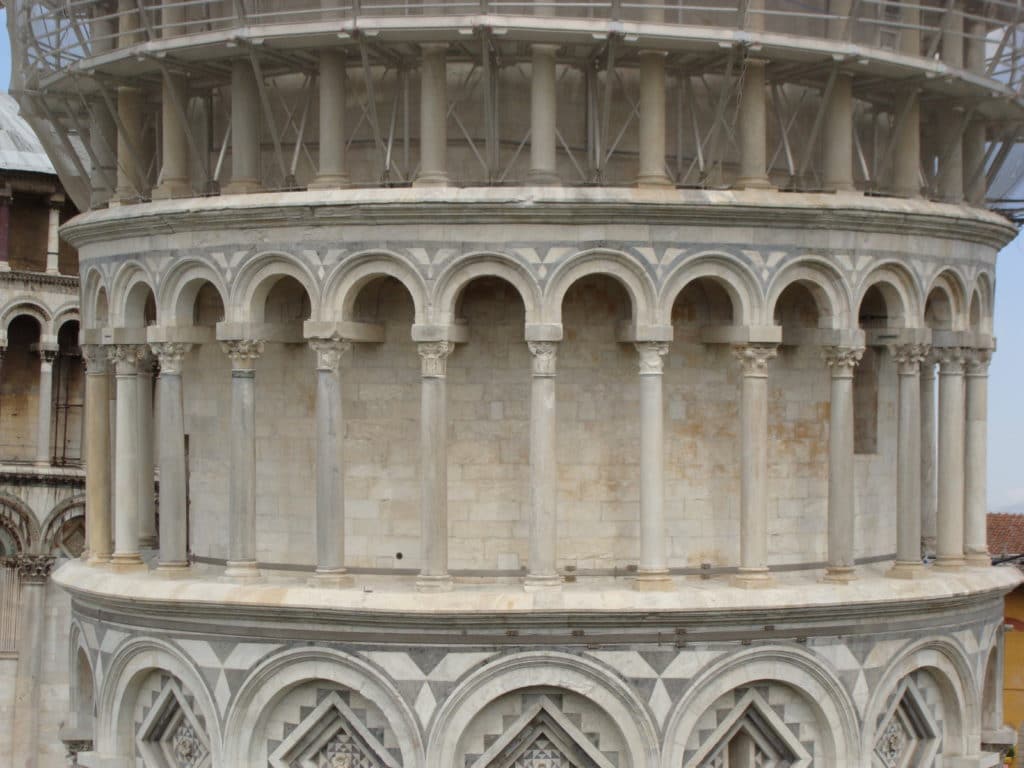
Ing. Giuseppe Bentivoglio, Opera della Primaziale Pisana.
Gisella Capponi, Istituto Superiore per la Conservazione e il Restauro; Work-site support: Luciana Festa e Flavia Vischetti; Support for historical research and photographic documentation: Mariabianca Paris.
Paolo Piccioni, Edoardo Loliva, ISCR. Massimiliano Bellomini, OPA Pisa
Site survey: Caterina Barnaba, Angela Amendola CBC Conservazione Beni Culturali, Rome. Digitisation and IT support: Gianluca La Rocca, Ezio Virgili, Sandro Bonannini (Pisa), Alessia Spatafora (Rome).